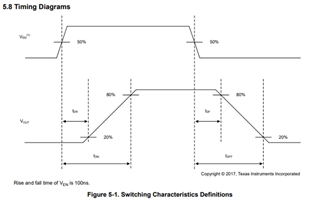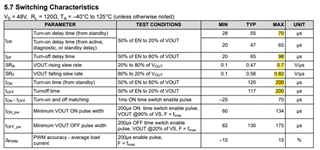Tool/software:
Hi Team,
I found there is a thread discussed about the max PWM topic:
(2) TPS1HTC100-Q1: TPS1HTC100-Q1 - Power management forum - Power management - TI E2E support forums
I can understand the calculation in that thread and the result is 2.5kHz would be supportable.
My question is:
If I want to apply 1.5kHz, which is 667us. And the duty cycle I need is 60%, then the time period of on/off would be 400us and 267us.
The Ton and Toff time in datasheet is 200us max -- in table 5.7. So the Ton/off is 200+200=400us. I suppose it is already same as the 1.5kHz 60% duty cycle ON time. Would that be a risk?
I would like to confirm if TPS1THC100 can support 1.5kHz 60% duty cycle.
Also, I would like to learn if calculate with Ton/off time is correct. or should I calculate with VOUT rising/falling slew rate?
Thanks
Best,
Frank




